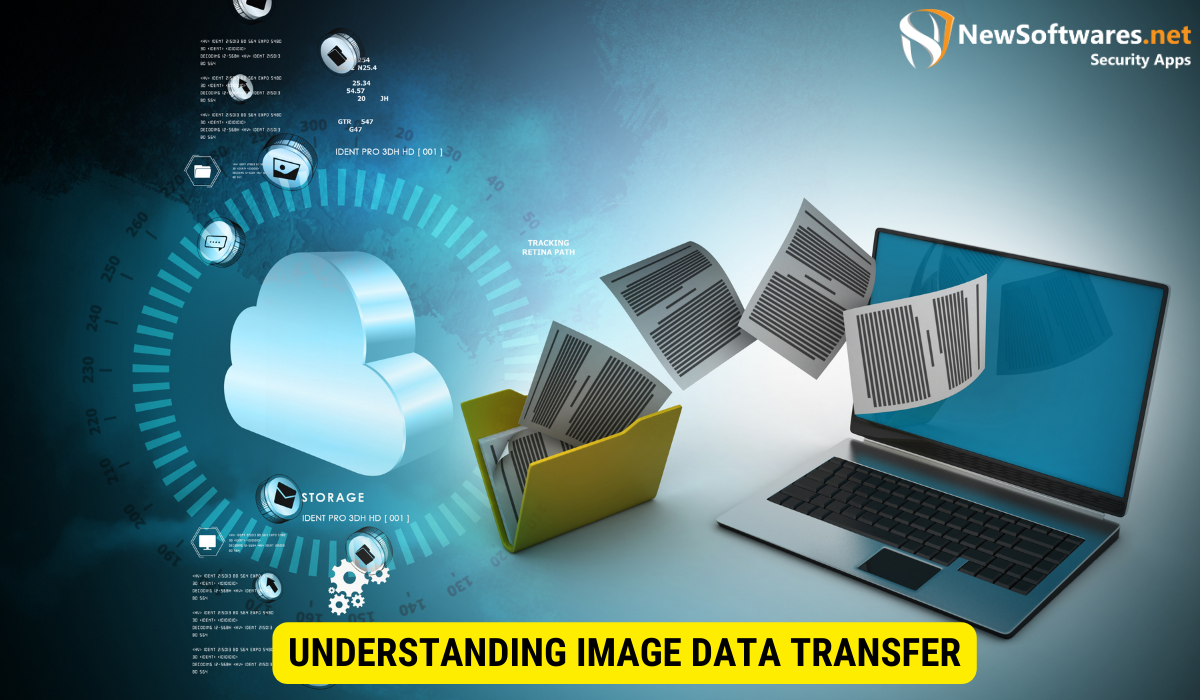Secure image data transfer is essential to protect confidentiality and integrity. Implement encryption, authentication, and regular updates to prevent unauthorized access and tampering. Multi-layered security measures and ongoing assessments enhance protection.
In today’s digital age, the transfer of image data between canvases is a common practice. Whether it’s sharing images between different devices or platforms, or even within the same canvas, the security of this data transfer is of utmost importance. Any vulnerability or oversight in the process can result in security errors that can compromise the confidentiality and integrity of the image data.
Understanding Image Data Transfer

Before delving into the security aspects of image data transfer, it is essential to have a basic understanding of how this process works. Image data, in its simplest form, consists of pixels arranged in a specific pattern to create a visual representation. This data can be encoded in various formats such as JPEG, PNG, or GIF.
When transferring image data between canvases, it involves transferring the binary representation of the image’s pixels. This transfer can occur through various means, such as direct connections, network protocols, or APIs.
The Basics of Image Data
Image data is typically stored and represented as an array of binary data. Each element in the array represents a pixel in the image, containing information about its color and other attributes. Understanding the structure and organization of this data is crucial for safe transfer between canvases.
For example, in a grayscale image, each pixel is represented by a single value ranging from 0 to 255, where 0 represents black and 255 represents white. In a colored image, each pixel is represented by a combination of three values, usually representing the intensity of red, green, and blue (RGB) channels.
Additionally, image data can also include metadata, such as the image’s dimensions, color space, compression settings, and more. This metadata provides important information about the image and helps ensure accurate rendering on the destination canvas.
The Role of Canvases in Image Transfer
A canvas serves as a container or workspace for rendering and manipulating image data. It provides an interface that allows developers or users to interact with the image, making modifications or performing transformations. When transferring image data, the source canvas sends the binary representation to the destination canvas for rendering or processing.
Canvases can vary in their capabilities and features, depending on the platform or software used. Some canvases support advanced image manipulation techniques, such as applying filters, adjusting brightness/contrast, or even performing complex image recognition algorithms.
Furthermore, canvases can also have different color spaces and color profiles, which affect how the image data is interpreted and displayed. Color management is an important consideration when transferring image data between canvases to ensure accurate color reproduction.
It’s worth noting that image data transfer is not limited to static images. Canvases can also handle dynamic image data, such as video frames or real-time streaming. In these cases, the transfer process becomes more complex, involving continuous updates and synchronization between the source and destination canvases.
Overall, understanding the intricacies of image data transfer and the role of canvases is crucial for ensuring the integrity and security of transferred images. By comprehending the underlying concepts and technologies, developers and users can effectively leverage image data transfer for various applications, ranging from simple image sharing to complex multimedia processing.
Potential Security Risks in Image Data Transfer
Although image data transfer may seem straightforward, various security risks can arise if proper precautions are not taken. These risks can lead to unauthorized access, data corruption, or even malicious attacks.
When it comes to image data transfer, there are several common security errors that can occur. One of the most prevalent is the lack of authentication and authorization mechanisms. Without proper validation of the sending and receiving parties, image data becomes susceptible to interception or manipulation. This means that unauthorized individuals could potentially gain access to sensitive images, compromising privacy and confidentiality.
In addition to authentication and authorization, encryption protocols play a crucial role in securing image data during transfer. Inadequate encryption can leave image data vulnerable to eavesdropping or tampering. Without encryption, attackers can easily intercept and manipulate the data, compromising its integrity and confidentiality. This can have serious consequences, especially when dealing with sensitive or personal images that should remain confidential.
Ignoring security measures in image data transfer can have severe consequences. First and foremost, unauthorized access to image data can lead to privacy breaches. This is particularly concerning when dealing with sensitive or personal images that should remain confidential. Imagine the implications if private medical images or intimate photographs were accessed by unauthorized individuals.
Additionally, if image data is tampered with during the transfer process, it can result in the display of distorted or manipulated images. This can impact the credibility and trustworthiness of the visual content, especially in applications where accurate representation is critical, such as medical imaging or forensic analysis. Imagine the potential harm that could be caused if manipulated images were used for diagnostic purposes or presented as evidence in a court of law.
It is essential to implement robust security measures when transferring image data to mitigate these risks. Authentication and authorization mechanisms should be in place to ensure that only authorized parties can access and manipulate the data. Encryption protocols should also be implemented to protect the integrity and confidentiality of the image data during transfer.
Furthermore, regular security audits and updates should be conducted to identify and address any vulnerabilities in the image data transfer process. This includes staying up to date with the latest encryption algorithms and security protocols to stay one step ahead of potential attackers.
By taking these precautions and prioritizing security in image data transfer, organizations can safeguard sensitive images, protect privacy, and maintain the integrity of visual content.
Best Practices for Safe Image Data Transfer
To ensure the safe transfer of image data between canvases, it is crucial to implement best practices that prioritize security and mitigate potential risks.
Essential Security Protocols for Image Transfer
Implementing secure image transfer protocols is vital to protect the confidentiality and integrity of the data. The use of industry-standard encryption algorithms, such as SSL/TLS, ensures that the data is encrypted during transit, making it difficult for attackers to intercept and interpret.
Furthermore, authentication and authorization mechanisms should be in place to verify the identity of the sending and receiving parties. This can be achieved through the use of digital certificates, secure tokens, or other secure authentication methods.
Ensuring Safe Transfer Between Canvases
When transferring image data between different canvases, it is essential to ensure that both the source and destination canvases are secure. This involves regularly updating and patching any vulnerabilities or security flaws in the canvas software, as well as implementing strict access controls to prevent unauthorized access.
Additionally, monitoring and logging the image data transfer activities can help in detecting any suspicious or malicious behavior. This allows for a proactive response and mitigation of any potential threats.
Advanced Techniques for Secure Image Data Transfer
While implementing basic security measures is crucial, incorporating advanced techniques can provide an extra layer of protection for image data transfer.
Utilizing Encryption in Image Data Transfer
Implementing end-to-end encryption ensures that the image data remains encrypted throughout the entire transfer process, from the source canvas to the destination canvas. This prevents any potential interceptions and tampering, even if the data is transmitted over untrusted networks.
Implementing Multi-Layered Security Measures
Using a multi-layered security approach involves combining different security measures and technologies to create a robust defense against potential threats. This can include firewalls, intrusion detection systems, and advanced threat intelligence solutions. By leveraging multiple layers of security, the risk of security errors and breaches can be significantly reduced.
Maintaining Security in Image Data Transfer

Ensuring the security of image data transfer is an ongoing process that requires continuous monitoring and improvement.
Regular Updates and Security Patches
Regularly updating and applying security patches to both the source and destination canvases is essential to address any newly discovered vulnerabilities. Keeping the software up to date ensures that any known security loopholes are promptly addressed, minimizing the risk of security errors in image data transfer.
Ongoing Security Assessment and Improvement
Performing regular security assessments and audits helps in identifying any weaknesses or potential vulnerabilities in the image data transfer process. By conducting regular penetration tests and vulnerability scans, organizations can proactively address any security gaps and make necessary improvements.
Key Takeaways
- Image data transfer involves the transfer of binary representation of pixels between canvases.
- Common security errors in image data transfer include lack of authentication and inadequate encryption.
- Ignoring security measures can result in privacy breaches and compromised image integrity.
- Best practices for safe image data transfer include implementing encryption protocols and authentication mechanisms.
- Advanced techniques such as end-to-end encryption and multi-layered security provide enhanced protection.
FAQs
Why is secure image data transfer important?
Secure image data transfer is important to protect the confidentiality and integrity of the data. It helps prevent unauthorized access and tampering, ensuring the privacy and accuracy of the images.
What security measures can be implemented in image data transfer?
Some key security measures for image data transfer include encryption protocols, authentication mechanisms, regular updates and patches, and monitoring/logging of transfer activities.
How can multi-layered security enhance image data transfer?
Multi-layered security combines different security technologies and measures to create a robust defense against potential threats. It provides added layers of protection, making it more difficult for attackers to breach the system.
What are the consequences of ignoring security measures in image data transfer?
Ignoring security measures in image data transfer can lead to unauthorized access, privacy breaches, image tampering, and compromised data integrity. It can also erode trust and credibility in applications where accurate image representation is crucial.
How often should security assessments be conducted for image data transfer?
Regular security assessments should be conducted to identify any weaknesses or vulnerabilities in the image data transfer process. The frequency of these assessments may vary depending on the organization’s risk profile and industry best practices.
Conclusion
Safely transferring image data between canvases requires careful consideration of security measures. Understanding the basics of image data and the role of canvases is crucial for ensuring safe transfer. By implementing best practices, such as encryption, authentication, and regular updates, organizations can minimize security errors and protect the confidentiality and integrity of their image data.
